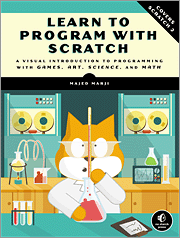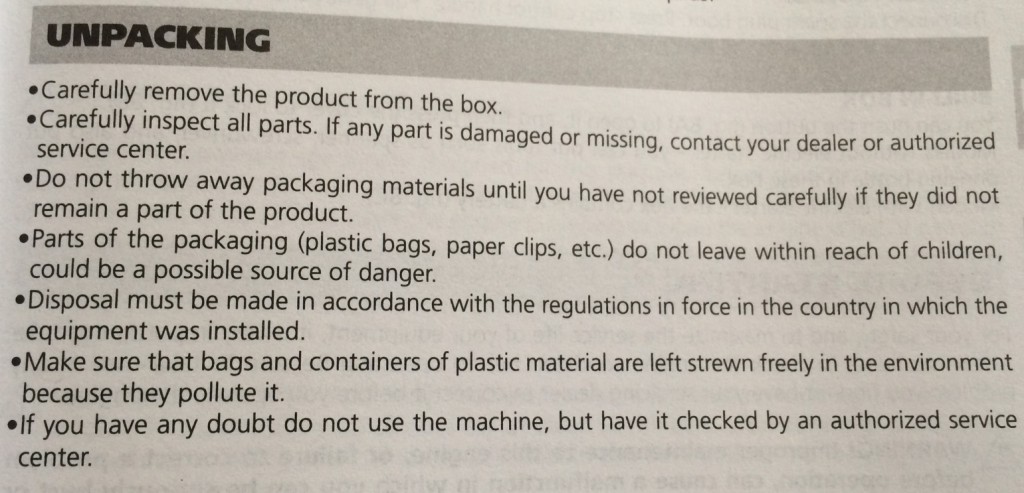 My latest selection for review from the O’Reilly Review Program is Learn to Program with Scratch by Majed Marji.
My latest selection for review from the O’Reilly Review Program is Learn to Program with Scratch by Majed Marji.
I picked this because my eldest has started to mess around with Scratch and I didn’t really know anything about it myself, so I wanted to get up to speed to be able to answer his questions.
The introduction says the book is targetted at readers from middle school and up: Wikipedia tells me that in the US this is age 11/12. It would definitely be beyond my 8yo to read this himself, and despite the kid-friendly looking cover, I found it challenging myself in places, despite being no spring chicken! 🙂
Things I liked:
- As promised on the cover, it’s visual. There are lots of illustrations to help you identify GUI elements and to get an idea of what you’re aiming to achieve through the use of certain functions and tools.
- It includes lots of short examples – “if you use these blocks, then this will happen, for example…”.
- It includes “Try it out” sections suggesting how you might tweak the current task/project to get a different result, giving scope to experiment and learn more.
- There are problems at the end of each chapter, so you can check you’ve really absorbed and undestood what was covered.
- Lots of example files are available to download, so you can save yourself some work on initial setup and get straight to the trying things out if you prefer.
Things I didn’t like:
- I found the longer examples/projects difficult to follow at times – possibly because they were mainly described in a series of paragraphs, rather than neat numbered steps or highlighted bullet points. This may be entirely down to my personal learning style, though, so your mileage may vary. It’s also possible that since I worked from the ebook edition rather than print, any formatting restraints imposed by that medium may have affected readability.
- Sometimes, you’re told which palette certain blocks come from, other times you aren’t. I guess it’s a “first mention” thing, but since a number of the palettes are similarly coloured, and my memory isn’t what it once was, I could’ve done with a bit more help in the later examples.
- I wasn’t keen on labelled images where you had to follow the trail from (1) to (2) to (3) to understand what was happening. Again, this one can probably be put down to learning style preferences.
There is useful information in there, but I think I’d’ve been happier using this book as a reference/refresher or source of ideas if I’d already learned the basics elsewhere – I didn’t find it ideal as my introduction to Scratch.
You can find out more about the book and order it direct from O’Reilly here.
![]() icon to the left of the URL field, you can click the icon to strip out all extraneous information on the page leaving only the text (automatically bumped up to a more readable size) and the images associated with the main page story. See the example below.
icon to the left of the URL field, you can click the icon to strip out all extraneous information on the page leaving only the text (automatically bumped up to a more readable size) and the images associated with the main page story. See the example below.




